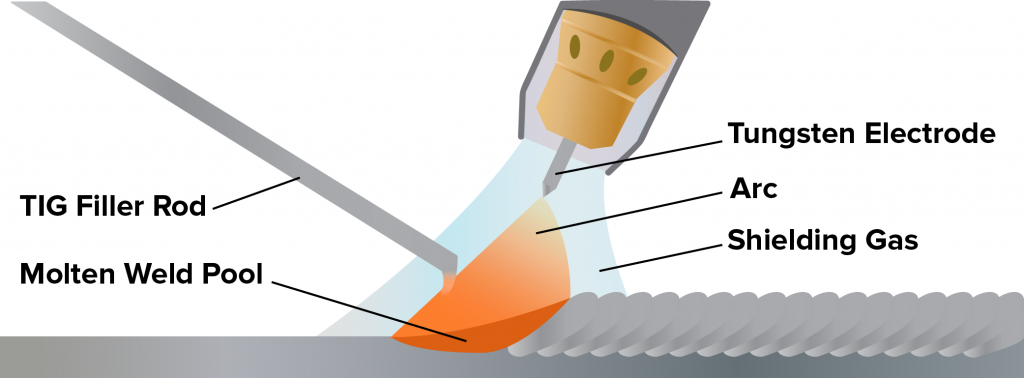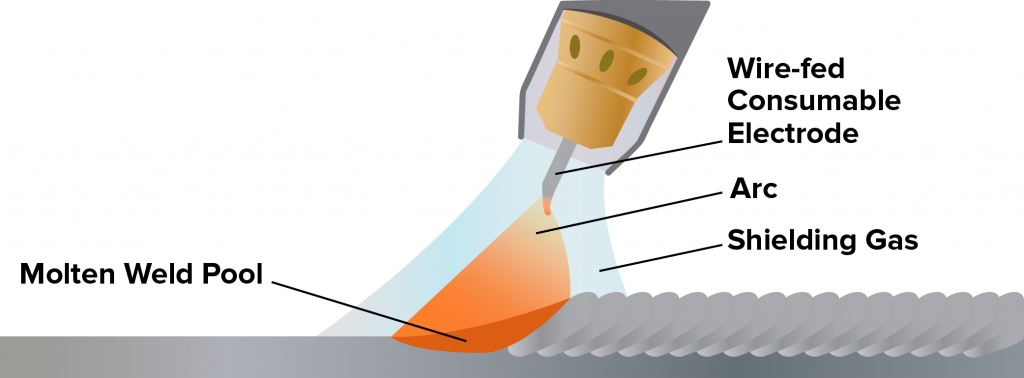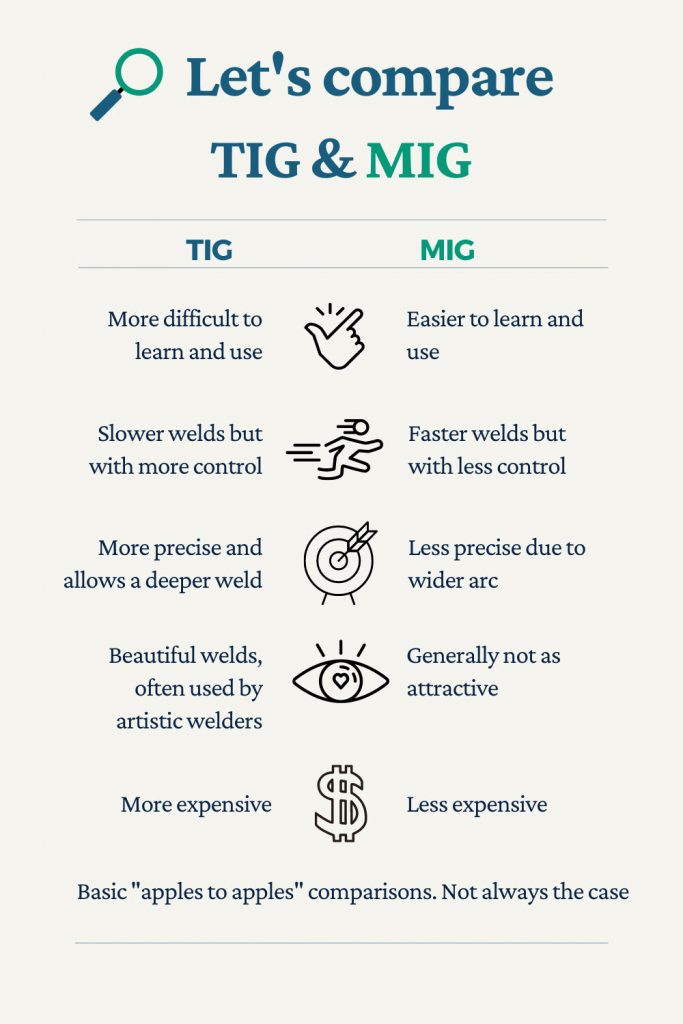TIG VS MIG WELDING
TIG vs MIG welding – the age-old question. Which is better? The answer is “it depends”. MIG is great for jobs that need MIG. Same with TIG.
TIG vs. MIG Welding
In this article, we’ll take a look at the often asked TIG vs. MIG welding question of “which is better, TIG or MIG welding”?
In truth, the answer is “it depends”.
There are times TIG is preferable, and other times MIG is. In the cases where either will do the job, it’ll come down to the welder and available tools.
With this in mind, we’ll take a look at the TIG vs. MIG welding question not with a mind of which is better, but more to explore how they are different and, in the end, when one may be preferable over the other.
If you are in the market for a reasonably priced entry-level TIG welder, take a look at our review of Perfect Power Tig Welder TIG 160.
What is the difference between TIG and MIG welding?
We should start with a basic explanation. Tungsten Inert Gas (TIG) and Metal Inert Gas (MIG) are welding techniques with many similarities and differences.
Both are meant to join separate metallic objects together, and both use an inert gas mixture to prevent or reduce the corrosion of the welding electrodes.
TIG welding defined

TIG is a bit more complex and requires more dexterity than MIG welding, as you’ll need to use both hands and one foot. The process is slightly slower than MIG, but the resulting welds are cleaner, and there is no weld splatter to contend with.
As with MIG, the flow of electricity through the gun, the electrode, and the metal surfaces to be welded heats the welding material and causes a pool of molten metal that, when cooled, fuses the surfaces as one.
An important difference between TIG and MIG is that the TIG arc is generally narrower and deeper than MIG, and this results in welds that can penetrate deeper into the metal.
TIG can use filler material like MIG welding does, but does not have to. The heat generated is powerful enough and deep enough to fuse the two surfaces and can do so without the splatter of MIG welding.
Because of TIG welding’s ability to create beautiful and clean welds, this is usually the technique of choice for welds that are visible such as for artists or ornamental welders.
What is TIG welding used for
TIG welding is routinely used for space and automotive needs, where the weld quality is of the highest nature and with minimal disruption of the surrounding metal. A good-looking weld finish is the icing on the cake.
TIG works well with steel, stainless steel, aluminum, Chromoly, copper, brass, and exotic metals such as titanium and magnesium.
Space and Aircraft– you’ll see a lot of TIG welding here due to the need to bond thin metals with high-quality welds, something that TIG welding is well suited for.
Pipes and Tubing – since these are inherently thinner metals, TIG is often used for precision welds.
Art – welding artists that like the beautiful and clean weld lines opt for TIG. This is not to say that they only use TIG here, just that on art where those clean lines are desired, TIG is the preferred welding method.
MIG welding defined

MIG welding is arguably one of the easier techniques to learn. It is often referred to as the “hot glue gun” method of welding, and the similarities between a hot glue gun are obvious.
MIG welding feeds a consumable electrode through the spool gun at a preconfigured speed. The flow of electricity through the electrode and the metal causes the electrode to melt, creating a molten weld pool.
As the welder pushes traverses the metal’s length to be welded, the weld pool is continuously created, leaving in its wake a (hopefully) beautiful and symmetric weld bead. Sometimes, they aren’t so beautiful.
MIG uses the filler material to bond the surfaces being welded to weld different types of metal together. This also makes MIG the choice technique for welding thicker metals as the metal to be welded does not have to heat up as much.
What is MIG welding used for
MIG welding excels and is seen often in automotive and construction arenas. MIG can provide strong welds for thin materials that work well for vehicle bodies and parts.
MIG works well with steel, stainless steel, and aluminum.
Construction – MIG welds abound in the steel structures of the buildings we see every day. For structural steelwork, MIG has become the welding method of choice.
Manufacturing – for products produced in mass quantities, MIG is often chosen due to its ability to cost-effectively and quickly get the job done.
TIG vs. MIG welding strength
Which provides the strongest weld is a common question and is a bit misleading. Underlying factors will determine which results in the strongest weld.
Given proper setup and penetration, properly done TIG and MIG welds will have the same tensile strength as they use the same filler metal.
The determining factor of the weld’s eventual strength is defined by the Heat Affected Zone (HAZ). Heating the metal to be joined compromises that metal due to thermal expansion. The more it’s heated, the less the metal can withstand stress.
It is the metal itself, rather than the weld, that is often the catalyst for a “failed weld”. The weld with the smallest HAZ can be considered the strongest of the welds. This is where TIG shines.
To be clear, a MIG weld is as strong as a TIG weld, but the underlying metal is compromised more due to the heat distribution inherent in MIG welding.
In the end, the determining factors for the strength of a weld are the filler metal type and how wide/deep the weld is. How “good” the weld is, of course, is the final and most important factor. A good MIG weld will be stronger than a bad TIG weld, and vice-versa.
Here’s a handy table of the above information if you want a quick reference:

TIG vs. MIG welding conclusion
I think you’ll see from the above that neither is “better” than the other. Both work well in their spaces. MIG welding is preferred and is better for situations and for welders where MIG welding is needed, and the same can be said for TIG welding. That being said, each has clear benefits over the others for specific situations, so it’s helpful to understand those differences.


